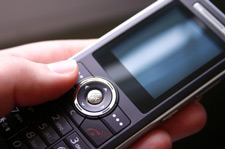Home | Glossary | Resources | Help | Contact Us | Course Map
Archival Notice
This is an archive page that is no longer being updated. It may contain outdated information and links may no longer function as originally intended.
Touch DNA Evidence
A DNA profile may be obtained by swabbing items thought to have been handled by a suspect, even in the absence of visible evidence. The ability to preserve and obtain this touch DNA evidence has evolved and been recognized over recent years.
Laboratory protocol will dictate who will collect this evidence. Firearm, latent print, or DNA examiners may have responsibility for collection. Regardless of who collects the evidence, the firearm or item to be swabbed should be handled with gloves prior to and during swabbing for potential touch DNA evidence.
Touch DNA evidence may be obtained from a firearm handled by a suspected shooter. Surfaces of the firearms that may be swabbed include slide serrations, serrated triggers, hammers, grips, magazine releases, and safety levers. The DNA swabs are preserved and packaged for later testing, if required.
Additional Online Courses
- What Every First Responding Officer Should Know About DNA Evidence
- Collecting DNA Evidence at Property Crime Scenes
- DNA – A Prosecutor’s Practice Notebook
- Crime Scene and DNA Basics
- Laboratory Safety Programs
- DNA Amplification
- Population Genetics and Statistics
- Non-STR DNA Markers: SNPs, Y-STRs, LCN and mtDNA
- Firearms Examiner Training
- Forensic DNA Education for Law Enforcement Decisionmakers
- What Every Investigator and Evidence Technician Should Know About DNA Evidence
- Principles of Forensic DNA for Officers of the Court
- Law 101: Legal Guide for the Forensic Expert
- Laboratory Orientation and Testing of Body Fluids and Tissues
- DNA Extraction and Quantitation
- STR Data Analysis and Interpretation
- Communication Skills, Report Writing, and Courtroom Testimony
- Español for Law Enforcement
- Amplified DNA Product Separation for Forensic Analysts


